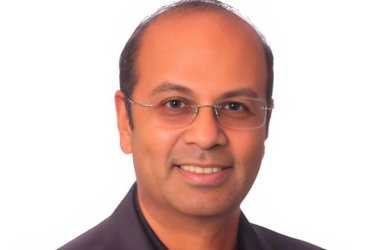 The recent data centre splash from Cisco means customers can now begin to implement the company’s fabric technology just about end-to-end, from the server network interface card to the network core.
The recent data centre splash from Cisco means customers can now begin to implement the company’s fabric technology just about end-to-end, from the server network interface card to the network core.
The new and enhanced products fulfill earlier Cisco pledges to extend its data centre switch fabric technology throughout the IT infrastructure. Key among them are multihop Fibre Channel-over-Ethernet (FCoE) capabilities for the Nexus 7000 core and MDS SAN switches, fabric extension enhancements for server NICs and hypervisors, and Layer 3 extensions to the Nexus 7000.
Cisco also threw in the new Nexus 3000 switch, which is targeted specifically at low latency financial market trading applications but has little to no cohesion with the rest of the Nexus line.
All of this comes as the industry awaits Cisco’s expected launch of a new data centre fabric line under the code-name “Jawbreaker.” Last week’s product roll out did not include Jawbreaker and it is unclear how, or even if, Jawbreaker will mesh – literally – with all of this.
In the interim, the new fabric extensions are designed to allow users to implement a flatter, lower latency unified Ethernet switching infrastructure in the data centre that support multiple types of storage traffic, as well as Ethernet data. They are intended to more tightly integrate and unify data centre servers, storage and networks into a fabric designed to simplify operations and scale into the cloud.
The key, though, is ensuring that Ethernet is as lossless and bulletproof as tried-and-true data centre fabric technologies.
“Cisco needs a broader fabric story for their architectural approach to data centre sales,” says Zeus Kerravala, an analyst at The Yankee Group. “But it comes down to execution and providing proof points that it works like InfiniBand,” the data centre fabric technology deployed for lossless data transmission. “Any amount of risk is too much risk for the buyer,” Kerravala says.
The stakes are high in this market. Cisco’s feeling the heat from multiple fronts in the data centre and, conversely, other vendors are feeling the heat from Cisco.
Cisco’s revamped data centre portfolio will go up against Juniper’s recently unveiled QFabric line, Brocade’s Brocade One products, Arista’s 7000 series switches, Avaya’s VENA architecture, Alcatel-Lucent’s “application fluent” switches, platforms from Enterasys, Extreme and Force10, and server/storage/switching and virtualisation architectures from HP, IBM and Dell.
Beginning at the server, Cisco’s new products include Adapter FEX and VM-FEX. FEX is a Cisco acronym for fabric extension.
Cisco says both Adapter FEX and VM-FEX are based on the IEEE 802.1Qbh standard for port extension of remote physical switches processing frames and packets on behalf of virtualised switches in blade servers. Adapter FEX splits a physical NIC into multiple logical NICs to accommodate multiple VMs per NIC, while maintaining a single point of management.
Cisco says Broadcom, Emulex and QLogic plan to put Adapter FEX on their silicon and NICs. VM-FEX extends switching to the server hypervisor to forward VM traffic with a physical switch instead of a virtual switch in the hypervisor. This enables IT managers to consolidate the virtual and physical access layers for better performance, and allow for network and security policy mobility with VMs.
Moving from the server to the server access switch, Cisco added universal port capabilities on the Nexus 5548 and 5596 Layer 2/3 switches. Unified Port allows users to designate any port to be 1G or 10G Ethernet, 2/4/8G Fibre Channel or Fibre Channel-over-Ethernet.
The switches also support IEEE 802.1Qbh, and are capable of working with Cisco’s FabricPath software for building large data centre fabrics with multiple active paths to accommodate increasing “east-west” traffic flows across server racks.
In the core, Cisco added “director-class,” multi-hop FCoE to the Nexus 7000 and the MDS 9500 SAN switch. Essentially, it’s FCoE on each platform, a capability expected for some time.
Multi-hop FCoE extends a unified fabric from the server access layer – with existing FCoE support on the Nexus 5000 top-of-rack switch line — to the core of the network. It allows all switching platforms to support all types of storage traffic — Fibre Channel, FCoE, iSCSI, and NAS — over a lossless 10G Ethernet, Cisco says.
Other enhancements to the Nexus 7000 core include the Location/ID Separation Protocol (LISP), a Cisco-initiated IP routing and addressing architecture designed to enable IT managers to move workloads around; support for cloud environments; a transition to IPv6; and scalability for multi-tenant networks. Cisco has also added MPLS to NX-OS operating system and the Nexus 7000 to support Layer 3 VPNs.
Most products will be available in the second quarter. The 5548UP and 5596UP switches are shipping now at $750 per port. The director-class FCoE license on the Nexus 7000 costs $10,000.





